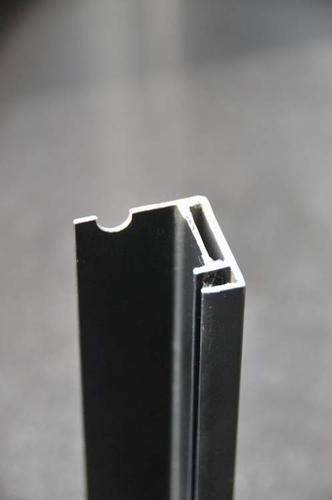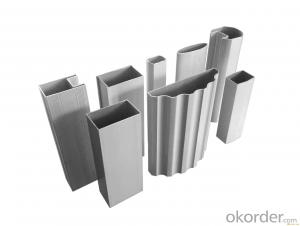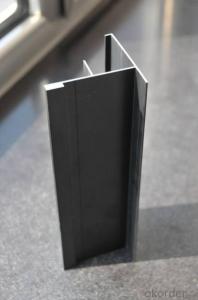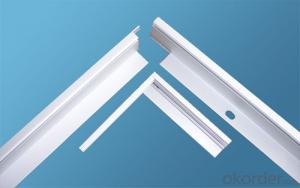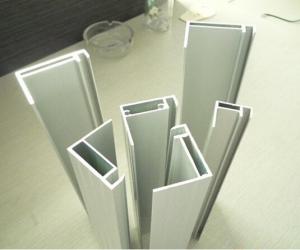Durable Aluminum Profiles for Solar Panel Frame
- Loading Port:
- China Main Port
- Payment Terms:
- TT OR LC
- Min Order Qty:
- -
- Supply Capability:
- -
OKorder Service Pledge
OKorder Financial Service
You Might Also Like
Durable aluminum profile for solar panels frame
1. Usage:Widely used for various kinds of solar panels with all cross sections
2. Surface: Anodize surface treatment
3. Alloy:6063 alloy temper
4. Size: Various dimensions in order to meet customer’s requirement
5. Advantage:
Tight precision
Excellent corrosion resistance under different weather
6. Package:Regular packing and customized packing under customer’s request
Surface treatment:
A. Mill finishing.
B. Anodizing.
C. Electrophoresis.
D. Powder coating.
E. PVDF coating.
Features:
1.Any colors available
2.Highly adhesive, acid-rain and alkali resistant
3.Stylish and elegant
4.Alloy:6063,6061,6082
- Q: How much is aluminum freight per kilometer per ton?
- The most accurate and effective way of Logistics: find a phone call to ask ah, less than 1 tons and tons of vehicle and hair are not the same, where to go is not the same, some small place to transfer is much more expensive, General Logistics 1 tons in about 500
- Q: Are there any specific regulations or standards for using aluminum profiles in certain industries?
- Yes, there are specific regulations and standards for using aluminum profiles in certain industries. These regulations and standards vary depending on the industry and the specific application of the aluminum profiles. They are in place to ensure the quality, safety, and performance of the profiles in various industries such as construction, automotive, aerospace, and manufacturing. Compliance with these regulations and standards is essential to meet industry requirements and ensure the proper use of aluminum profiles.
- Q: What are the different surface etching options for aluminum profiles?
- Some different surface etching options for aluminum profiles include chemical etching, mechanical etching, and laser etching. Chemical etching involves using a chemical solution to remove layers of the aluminum surface, creating a desired pattern or texture. Mechanical etching involves using abrasive materials or tools to physically remove material from the surface. Laser etching uses a laser beam to selectively remove material from the surface, creating precise and intricate designs.
- Q: What are the standards and regulations that control the use of aluminum profiles in construction?
- <p>Yes, there are several standards and regulations that govern the use of aluminum profiles in construction. These include international standards such as ISO 7039 and ISO 8039, which specify requirements for aluminum alloy extruded profiles. In the United States, the American Architectural Manufacturers Association (AAMA) provides guidelines, and the Aluminum Association sets standards for aluminum products. European standards like EN 755 and EN 12206 cover aluminum extrusions for general purposes and structural applications. Compliance with these standards ensures the safety, durability, and performance of aluminum profiles in construction projects.</p>
- Q: Can aluminum profiles be used in swimming pool enclosures or structures?
- Yes, aluminum profiles can be used in swimming pool enclosures or structures. Aluminum is a popular choice for constructing swimming pool enclosures due to its excellent corrosion resistance and durability. It is resistant to rust and degradation from exposure to water and chlorine, making it ideal for use in a pool environment. Additionally, aluminum profiles can be easily shaped, welded, and installed, allowing for the construction of custom-designed enclosures that meet specific requirements and aesthetics. They are also lightweight, which makes them easier to handle and transport during installation. Overall, aluminum profiles offer a reliable and long-lasting solution for swimming pool enclosures or structures.
- Q: Is it possible to utilize aluminum profiles in regions with low temperatures?
- <p>Yes, aluminum profiles can be used in cold climates. Aluminum is a durable material with excellent resistance to corrosion and weathering, including low temperatures. It maintains its strength and does not rust or degrade in cold conditions. However, it's important to consider thermal expansion and contraction, as aluminum expands and contracts more than some other materials. Proper design and installation practices can mitigate these effects, making aluminum profiles suitable for use even in extreme cold environments.</p>
- Q: How is the price of aluminum profile calculated?
- The price is in accordance with the composition of aluminum ingot price plus processing fees in the form of the aluminum price is according to the informed price this is the South China Sea, the Internet can be found on the aluminum ingot prices every day is not the same, Saturday Sunday is not the price of aluminum ingot processing, to look at the cost of the products, aluminum price + welding rod cost the processing cost is + aluminum prices, profile surface treatment is not the same, the price is not the same
- Q: Can aluminum profiles be used in noise insulation applications?
- Yes, aluminum profiles can be used in noise insulation applications. Aluminum profiles are versatile and can be designed to have excellent acoustic properties. They can be used to create soundproof windows, doors, walls, and enclosures. Aluminum profiles can be combined with materials like acoustic glass, rubber seals, and insulation foam to enhance their noise insulation capabilities. Additionally, aluminum's inherent strength and durability make it suitable for use in noise insulation applications as it can withstand the pressure and vibrations caused by sound waves. Overall, aluminum profiles offer a viable solution for noise insulation requirements in various settings, including residential, commercial, and industrial buildings.
- Q: Where is the exact location? TwentyBecause I was doing aluminum sales, want to go to the market!Where is the specific market aluminum sales, as long as there is, I have to go around! Say where it is! For example, what area, what road, how many?! Since I went to Chengdu for the first time, please tell me more about it. Thank you!
- 512 building materials market 'The two ring road north station over there direction
- Q: Are aluminum profiles suitable for automotive racks and carriers?
- Yes, aluminum profiles are suitable for automotive racks and carriers. Aluminum is a lightweight and durable material that can withstand the demands of carrying heavy loads while maintaining structural integrity. It also has excellent corrosion resistance properties, making it ideal for outdoor use and exposure to different weather conditions. Additionally, aluminum profiles can be easily customized and designed to meet specific requirements, allowing for versatility in the design and construction of automotive racks and carriers.
Send your message to us
Durable Aluminum Profiles for Solar Panel Frame
- Loading Port:
- China Main Port
- Payment Terms:
- TT OR LC
- Min Order Qty:
- -
- Supply Capability:
- -
OKorder Service Pledge
OKorder Financial Service
Similar products
Hot products
Hot Searches
Related keywords

